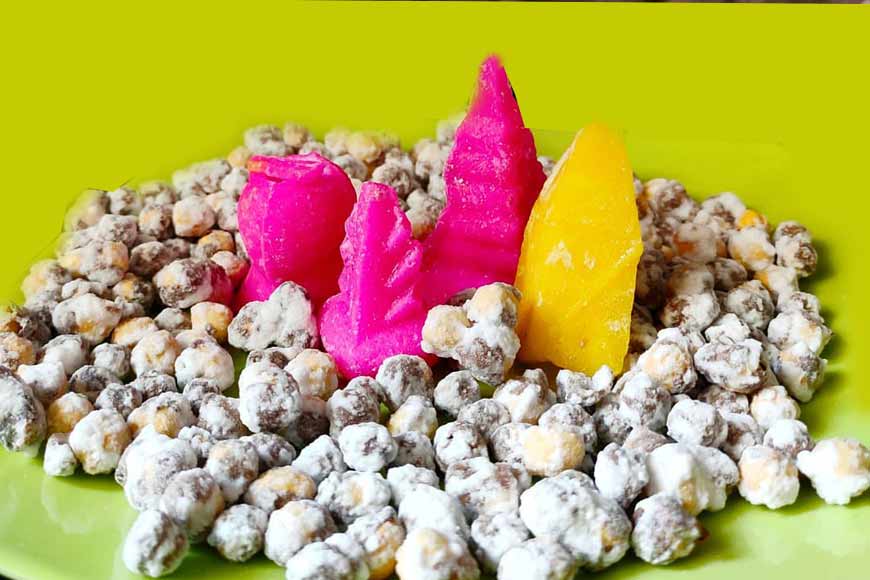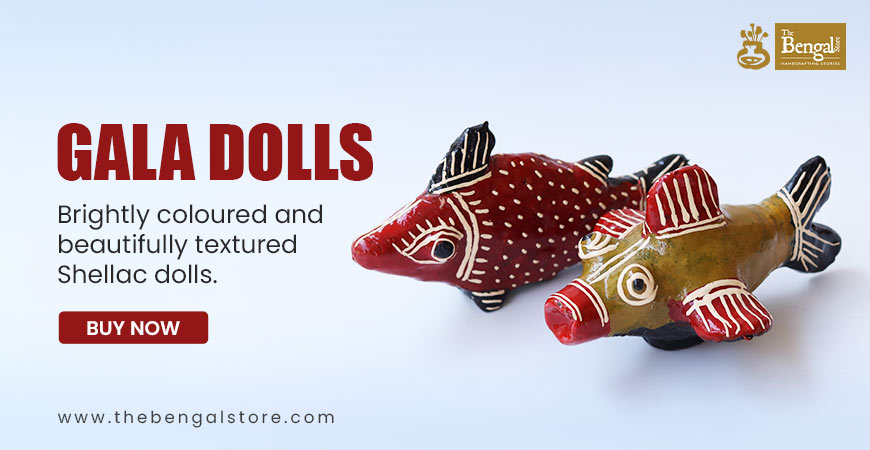Moth & Futkorai: forgotten delicacies of Dol Jatra – GetBengal story

According to the Bengali calendar, Dol Jatra, also known as Dol Purnima, is the last festival of the year. People embrace the spring season with open arms as they celebrate the event. Although Dol and Holi are the same festival, they are based on different Hindu mythological stories. While Bengali Dol centres on Krishna and Radha, Holi is based on the story of Prahlad, a North Indian incarnation of Vishnu. In Vrindavan, Dol begins the day after a full moon night of Phalgun, a Bengali calendar month.
Dol means "swing." After the colour is applied, the sakhis commemorate the union by spinning the couple (Lord Krishna and Radha) around on a palanquin, a symbol of jatra (journey). The Dol Jatra is thus inaugurated. The traditional Bengali Dol Jatra is still performed today using dried colours.
In Gaudiya Vaishnavism, this event is even more significant as it marks the birth of Chaitanya Mahaprabhu, who is considered to be the combined avatar of Radha and Krishna. He was a renowned philosopher and saint who was instrumental in the growth of the Bhakti movement in India. He also founded the tradition of Gaudiya Vaishnavism.
While sweets like gujiya, malpua, and thandai dominate the festive menu, savoury sweet snacks like Mothh and futkorai provide the perfect balance to all the sugary indulgence in Bengal. Mothh and futkorai are especially popular during Holi because they can be made in advance and stored for days. These are easily available in Dashakarma Bhandar during Holi, as these are supposed to be offered to God on Dol Purnima.
Moth is a sugary, decorative sweet made from sugar and edible food colour. These sweets are shaped into intricate forms like horses, elephants, temples, and other festive symbols, adding to the celebratory spirit of Holi.
Fut korai is a puffed, airy, and crispy snack made from fried lentil balls or grains. It is often mixed with nuts, spices, and roasted chana (Bengal gram) for added crunch and flavour.
For many, Moth and futkorai bring back childhood memories of Holi celebrations. The laughter of loved ones, the vibrant colours in the air, and the aroma of freshly prepared sweets and snacks in the kitchen create a festive atmosphere like no other. GrandMothhers and Mothhers often prepare these treats days in advance, ensuring they are ready to be served with endless rounds of chai and festive drinks.
In recent times, traditional Bengali sweets like Mothh and futkorai have been on the verge of extinction. With modern celebrations revolving around thandai, lassi, and other contemporary treats, the classic prasad offerings of Dol Purnima are gradually disappearing from households. Once an essential part of the festivities, these age-old delicacies are now rarely seen, overshadowed by commercially available sweets and packaged snacks.
The loss of these traditional foods means a fading connection to cultural heritage and ancestral rituals. Reviving them in our celebrations is not just about relishing their unique taste but also about preserving a rich legacy that defines Holi in Bengal. By making and sharing these treats, we can keep alive the true spirit of the festival and pass on its authentic flavours to future generations.










